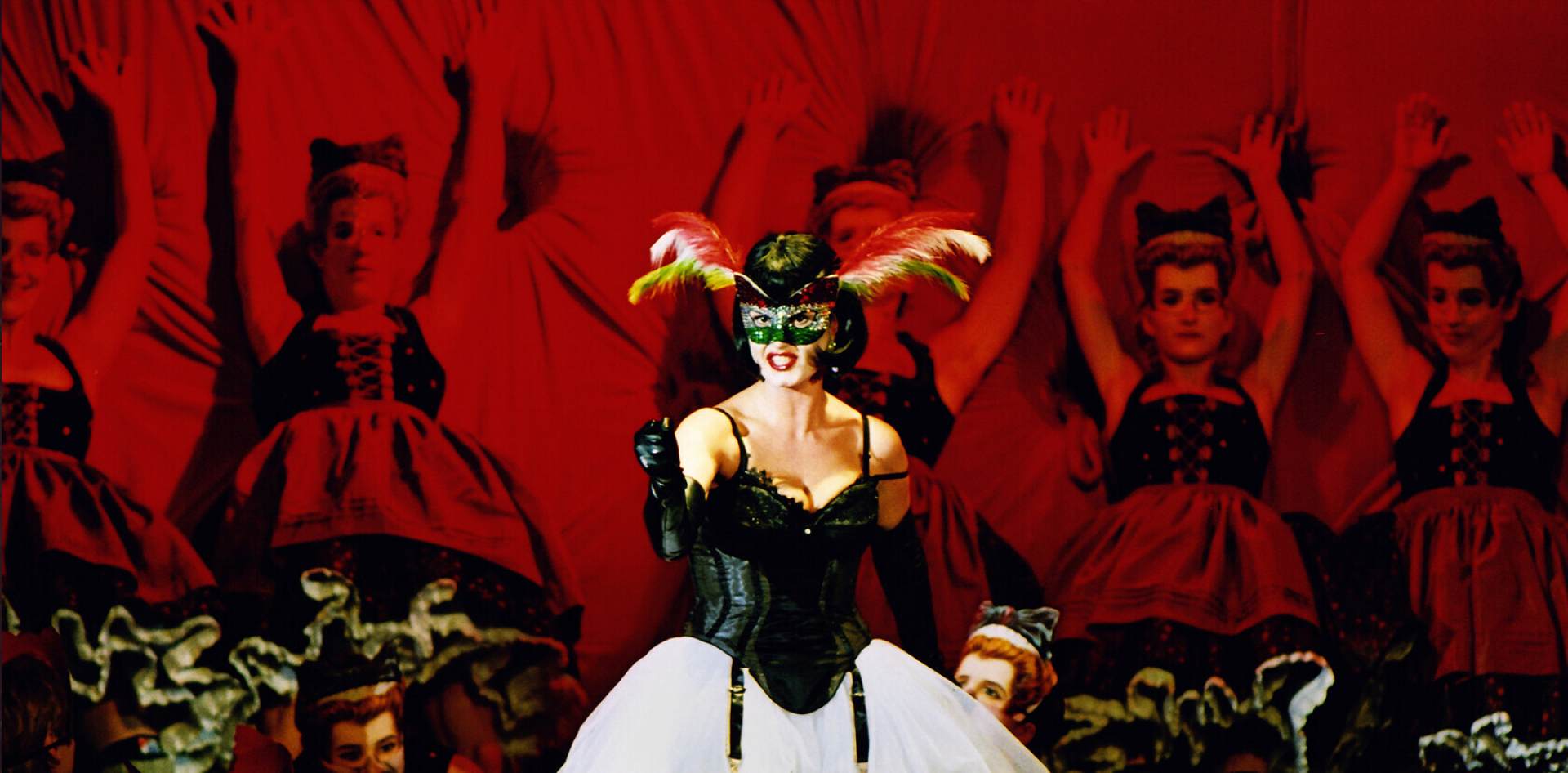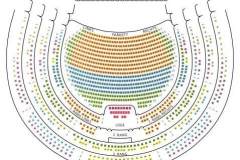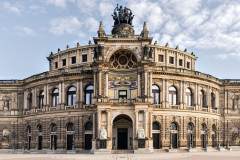The Bat
Mo | Tu | We | Th | Fr | Sa | Su |
Die Fledermaus / The Bat - Johann Strauss
Lyrical comedy in three acts
Libretto by Carl Haffner and Richard Genée after the vaudeville »Le Réveillon« by Henri Meilhac and Ludovic Halévy
Performed in German with German and English surtitles
Intermission after 90 minutes
Premiere: December 18, 2003
A story fizzing with irony and champagne, all danced to the sounds of the waltz.
Notice
Please note that there may be limited visibility in the front rows of the orchestra and in the seats in the 4th and 5th tiers during certain scenes.
Storyline
Weinberg, near Vienna
Act 1
The maid Adele has received an invitation to Prince Orlofsky’s ball from her sister Ida (No. 1). She would like to accept the invitation and tries in vain to ask her mistress Rosalinde von Eisenstein for permission to go (No. 1a).
Alfred, tenor and Rosalinde’s former lover, succeeds in blackmailing her into a rendezvous. And so she now gives Adele the evening off.
Gabriel von Eisenstein, condemnned to go to prison for having insulted a tax-collector, returns from his trial with his lawyer Dr. Blind, blaming him for the longer sentence he has received (No. 2).
Dr. Falke now enters and persuades Eisenstein to accompany him secretly to the ball being given by the Russian Prince Orlofsky and amuse himself before he goes to prison. — And this is where Dr. Falke’s plan of revenge on Eisenstein starts to unfold. Eisenstein had left him in a park three years ago after a masked ball, drunk and dressed as a bat, so that he was made a laughing stock the next morning when he returned home (No. 3).
When they say goodbye, Eisenstein, Rosalinde and Adele affect sadness for none of them recounts what they really plan (No. 4).
Alfred appears for the agreed tête-à-tête. Frank, the prison governor, enters and arrests the tenor, truly believing that he is Gabriel von Eisenstein who has to be arrested (No. 5).
Act 2
The masked ball at Orlofsky’s (No. 6/7). Gabriel von Eisenstein is introduced to society under the assumed name Marquis Renard, and thinks he recognises one of the masked ladies to be his maid Adele. She denies it (No. 8).
Eisenstein meets Chevalier Chagrin who is actually the prison governor Frank; both outdo each other as French impostors.
A masked Hungarian countess draws everybody’s attention to herself with a csardas (No. 10). Eisenstein flirts outrageously with her. His well-tested trick of making conquests with the help of a lady’s watch fails this time (No. 9). His wife is concealed behind the mask of the Hungarian countess, and she steals the watch as corpus delicti.
Falke and Orlofsky make all the guests at the ball fraternise with each other (No. 11).
The clock strikes six and Eisenstein and Frank have to flee the party.
Act 3
At the prison, Frosch, the court usher, is trying to keep law and order. Prison governor Frank arrives for work still under the influence of the ball (No. 13).
Adele and her sister Ida have followed him. They want to persuade him to finance Adele‘s artistic training. Uninhibited, she presents her artistic talents (No. 14).
Gabriel von Eisenstein is then announced. He is astonished to meet the »Chevalier« here. He too learns that he cannot be taken into custody because there is already a »von Eisenstein« in the cell.
Lawyer Dr. Blind — whom Eisenstein supposedly asked to come — enters. Eisenstein suspects Rosalinde of adultery and dresses as Blind to interrogate his Rosalinde and Alfred. Full of jealous anger, he reveals himself to them (No. 15).
Dr. Falke now arrives and calls all the guests from the ball to enter. They tell Eisenstein that they were all party to the »bat’s revenge«.
The champagne song becomes a cynical justification of Falke’s passion for infidelities (No. 16).
Program and cast
Gabriel von Eisenstein: Christoph Pohl (December 31, 2024, January 1, 4, 2025), Jürgen Müller (January 10, 17, 2025)
Rosalinde: Flurina Stucki
Alfred: Mario Lerchenberger
Prince Orlofsky: Josy Santos
Adele: Jasmin Delfs
Dr. Falke: Rafael Fingerlos
Frank: Matthias Henneberg
Dr. Blind: Gerald Hupach
Ida: Cornelia Butz, Gundula Rosenkranz
Frosch: Wolfgang Stumph
Musical Direction: Marcus Merkel
Production: Günter Krämer
Stage Design: Gisbert Jäkel
Costumes: Falk Bauer
Lighting: Jan Seeger
Choreography: Otto Pichler
Chorus: Jan Hoffmann
Saxon State Opera Choir Dresden
Saxon State Orchestra Dresden
Semperoper Dresden
The Semperoper is the opera house of the Sächsische Staatsoper Dresden (Saxon State Opera) and the concert hall of the Sächsische Staatskapelle Dresden (Saxon State Orchestra). It is also home to the Semperoper ballet. The building is located near the Elbe River in the historic centre of Dresden, Germany.
The opera house was originally built by the architect Gottfried Semper in 1841. After a devastating fire in 1869, the opera house was rebuilt, partly again by Semper, and completed in 1878. The opera house has a long history of premieres, including major works by Richard Wagner and Richard Strauss.
The first opera house at the location of today's Semperoper was built by the architect Gottfried Semper. It opened on 13 April 1841 with an opera by Carl Maria von Weber. The building style itself is debated among many, as it has features that appear in three styles; Early Renaissance and Baroque, with Corinthian style pillars typical of Greek classical revival. Perhaps the most suitable label for this style would be eclecticism, where influences from many styles are used, a practice most common during this period. Nevertheless, the opera building, Semper's first, is regarded as one of the most beautiful European opera houses.

 EN
EN DE
DE IT
IT FR
FR ES
ES RU
RU JP
JP RO
RO
 Seating plan
Seating plan 


